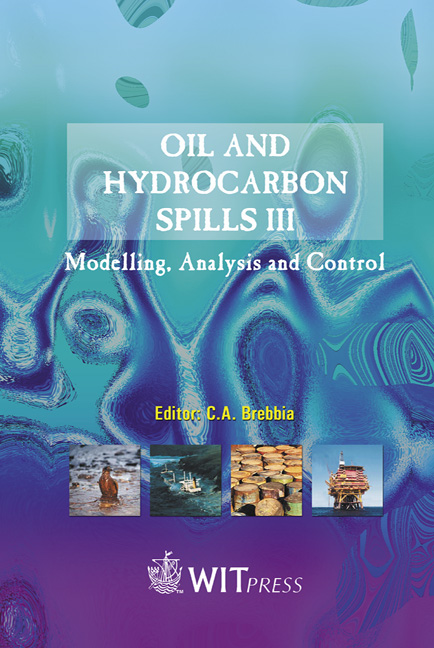Bioremediation Of Hydrocarbon Pollution Using Biosurfactant Producing Oil Degrading Bacteria
Price
Free (open access)
Transaction
Volume
59
Pages
Published
2002
Size
462 kb
Paper DOI
10.2495/OIL020201
Copyright
WIT Press
Author(s)
I. M. Banat, K. S. M. Rahman & J. Thahira-Rahman
Abstract
Bioremediation of hydrocarbon pollution using biosurfactant producing oil degrading bacteria I.M. Banat, K.S.M. Rahman, & J. Thahira-Rahman School of Biological and Environmental Sciences, University of Ulster, Northern Ireland, UK Abstract A study was undertaken to investigate the distribution of biosurfactant producing, oil degrading bacteria in the oil-contaminated environment. Among 32 oil- degrading bacterial isolates 80% exhibited biosurfactant production. They belonged to the genera Micrococcus, Bacillus, Corynebacterium, Flavobacterium, Pseudomonas, Acinetobacter, Moraxella and flavobacterium. They emulsified xylene, benzene, hexane, crude oil, kerosene, gasoline, diesel and olive oil for various degrees. The first five of the above had highest emulsification activity and crude oil degradation ability and therefore were selected for the preparation of mixed consortium for bioremediation studies. Close inspection of the most efficient culture Pseudomonas sp. DS10-129 showed a maximum of 7.5 gl-1 rhamnolipid type biosurfactant which resulted in surface tension reduction in the culture broth from 68mN m-1 to 29mN m-1 at 84 h incubation. Mass spectrometry examination revealed the presence of both mono and dirhamnolipids (both Rha-C10-C10 and Rha-Rha-C10-C10). The biosurfactant producing isolates had a broad spectrum of emulsification activity with a range of hydrocarbon compounds. The potential of their use in oil bioremediation is discussed. Introduction Biosurfactants are surface-active substances synthesised by living cells. They have the properties of reducing surface tension, stabilizing emulsions, promoting foaming and are generally non-toxic and biodegradable. Interest in microbial
Keywords





